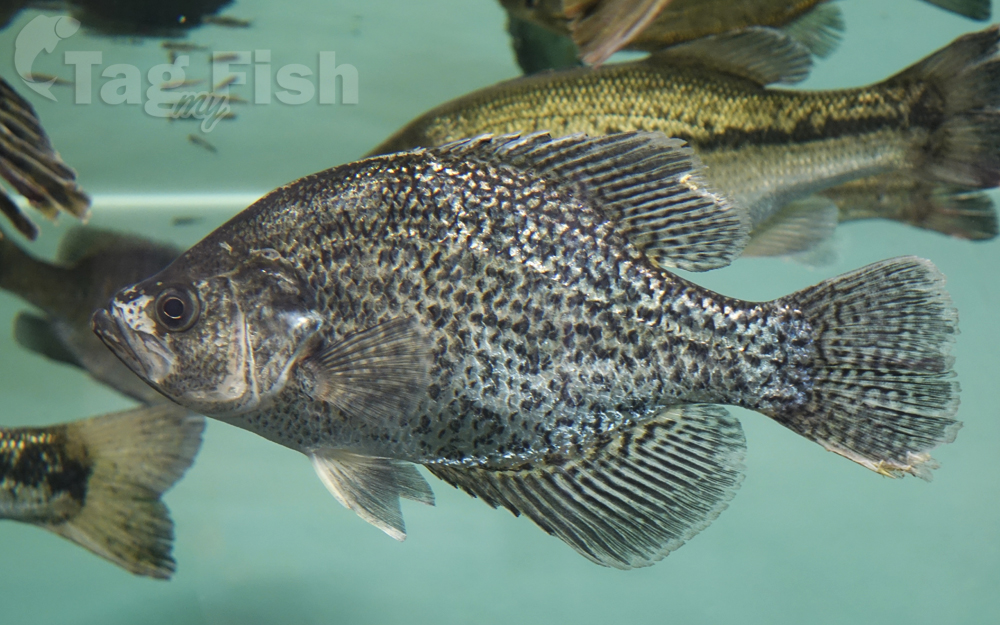Black crappie
(Pomoxis nigromaculatus)

Classification
General data
The black crappie (Pomoxis nigromaculatus) is a freshwater fish found in North America, one of the two crappies. It is very similar to the white crappie in size, shape, and habits, except that it is darker, with a pattern of black spots.
Black crappies are most accurately identified by the seven or eight spines on its dorsal fin (white crappies have five or six dorsal spines).
Crappies have a deep and laterally compressed body. They are usually silvery-gray to green in color and show irregular or mottled black splotches over the entire body.
Black crappies have rows of dark spots on their dorsal, anal, and caudal fins. The dorsal and anal fins resemble each other in shape.
Both crappies have large mouths extending to below the eye, and thin lips—both suggestive of their piscivorous feeding habits.
Crappies are typically about 4–8 inches (10–20 cm) long. The current all-tackle fishing world record for a black crappie is 2.47 kg (5 lb 7 oz).
The maximum length reported for a black crappie is 19.3 inches (49 cm) and the maximum published weight is just under 6 pounds (2,700 g).
Distribution
North America: The native range is difficult to determine due to its widespread introduction throughout the USA but it is presumably Atlantic Slope from Virginia to Florida, Gulf Slope west to Texas in the USA, St. Lawrence-Great Lakes, Hudson Bay (Red River), and Mississippi River basins from Quebec to Manitoba in Canada south to the Gulf in the USA.











